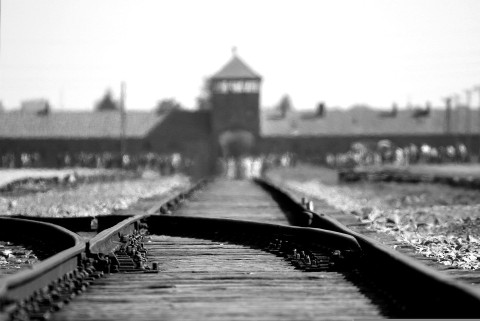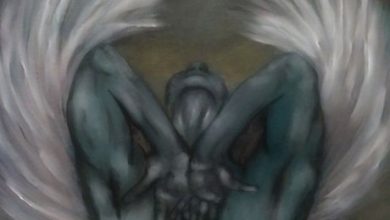
Kindertransport by Daniel Samuels is a gripping play that focuses on the psyche of children who were separated from their parents at the advent of World War II as a measure to be protected from the ill-treatment of the Jewish population by Nazi Germany. The playwright brings forth the sensitivity of emotions surrounding the issues of emigration, identity, culture, death and guilt. Samuel brilliantly and seamlessly juxtaposes the past with the present to allow the audience a view of the inner thought process of her protagonist Evelyn who is enduring trauma for years.
Daniel Samuels is a British author and playwright whose Jewish cultural background renders this text a personal touch of experience. The play was produced in 1993 and is influenced by the life experiences of people close to Samuels.
If you are looking for an Analysis of the play, click on the link below :
ANALYSIS OF KINDERTRANSPORT
Kindertransport | Historical Context
The play is contextually set in the period when the Second World War was on the cards. Germany and Austria were brutally exterminating Jews and to protect the group from violence, the British government launches a programme called the “Kindertransport” which allowed only Jewish children a safe entry on British soil. However, while these emigrations did protect them from death, the children were separated from their parents and were expected to adopt a new culture and language. The process of assimilation was not smooth for them as the children often experienced kindness in the garb of exploitation and a few lucky ones were adopted by selfless people who loved them as their own.
Kindertransport | Setting
Most events in the play are enacted in Evelyn’s attic which is a store room filled with memories from the past accompanied by scenes of the train and railway platform. The timeline of the play allows it to travel to both Germany and England.
Kindertransport | Play Summary
Kindertransport opens with the Ratcatcher’s music in the background. Eva (young Evelyn) is sitting with her mother Helga in a dust-filled store room conversing about the former’s need to become independent soon. This past blends into the present as the grown-up Eva i.e. Evelyn enters the store room and ignores Eva and Helga which are images from her past that often haunt her when she is in her attic. Evelyn is gathering things for her daughter Faith as she prepares to live independently.
The scene again shifts to Eva and Helga debating over trains and the necessity to escape. Helga explains to innocent Eva about her future departure to England as the only measure of protection which disturbs her due to the incomprehensibility of such an idea. She is just a nine-year-old girl whose mother announces to her that she is being sent away. Like Eva who moves away from her family, Faith in the present is also moving out to live separately from her mother. However, Faith has second thoughts about the decision and decides not to move out and leave her mother. The scene then shifts to Faith alone in the attic as she opens a trunk filled with documents, letters and images from the past she is yet to learn about. It is put together with Helga opening the case and inspecting certain items that Eva would require or not for her journey. Lil, Evelyn’s foster English mother enters the attic and inquires about Faith’s activities. Helga and Faith are both holding the Ratcatcher’s book in their respective times that the play presents as a simultaneous action. The first scene of Act I close with Eva’s journey to England and her encounter with a Nazi official who takes away pennies from her as an outcome of his unreasonable security check.
Scene II begins with Faith reading a letter dated the year 1941 by Evelyn’s birth mother Helga. Eva on the other hand is seen eating bread on the train when an English organiser informs her about the delay in the arrival of her English guardians. But soon, Lil arrives and comforts her. Faith is unaware of the recipient of the letter and suspects the mystery which ties her mother to it. After a few days of settlement, Eva is seen writing a letter in broken English to British authorities requesting them to arrange permits for her parents. Meanwhile, Lil enters the scene and Faith demands to know the truth. Her grandmother provides her with factual information such as Evelyn’s change of name and date of birth for the purpose of documentation, her birth parents’ death during the war, her journey to England all alone and lastly her continuous struggle with the loss. Evelyn too enters and witnessing snippets of her past lying all over the floor takes her back to the insufferable time. She argues with Faith to allow her privacy and instructs her to not investigate the matter further. But Faith is reluctant to learn about the past which also connects her to Jewish ancestry. It is part of her identity as well. Lil tries to pacify Faith and watching them both fighting, the unpleasant atmosphere evokes Eva who announces to a paranoid Evelyn about the arrival of the Ratcatcher and this marks the end of Act I.
Act II begins with Evelyn sitting down alone in the attic accompanied by a tray of cigarettes recalling a conversation with her mother German Helga about the imperishable nature of jewels and their ability to defeat death. Helga hides a chain, a pocket watch and two rings for Eva as tokens of reminder and their legacy. Faith’s knock interrupts the recollection. She tries to apologise to her mother for her rudeness but Evelyn pays no heed. Again, a scene from the past where Eva receives a parcel from Helga delivered by a postman who talks about Hitler and the necessity of saluting him in Germany while Eva expresses her contempt for the ruler. The parcel has her storybook, a letter and her Passover which is used to celebrate a Jewish tradition. The contents of the letter unfold as if Eva is conversing with her mother live. The goodbye at the end of the letter juxtaposes Lil’s banging on the door to check upon Evelyn. Lil reasons out in favour of Faith deserving to know the truth. Eva on the other hand is once again being sent away by Lil to a safer place as the war is about to start. But Eva does not wish to leave and she faints. Lil drops her decision to send her girl away.
The newfound companionship of the past comes alive in the present as both Lil and Evelyn venture to destroy papers in the attic to allow Evelyn some free air. But during the destruction, Evelyn begins to blame Lil for the perfect accommodation in English culture and abandonment of her Jewish one. Eva is seen waiting for her parents at the station for three consecutive days and the station guard informs her about the non-arrival of any trains from London. A disappointed Eva begins to lose hope and when she turns fifteen, she decides to sell her jewels after watching horrifying newsreels on the war but Lil stands against it. Faith enters the attic and is devastated. Her mother and grandmother are deleting the history she should be informed about. Evelyn in a rage decides to narrate her backstory including her father’s death in a gas chamber. Eva who is now Evelyn is seventeen and receives Helga one day at her door. She feels distant toward her birth mother and refuses to go away with her to New York. The sense of unfamiliarity and forced migration compels Evelyn to address her mother as the Ratcatcher and the scene ends with the Ratcatcher’s music.
The final scene of the play has Faith and Evelyn moving boxes to resume Faith’s moving out preparations and Lil leaves their premises. Evelyn confesses to Faith to have kept Lil away from the truth about Helga being alive when she was young as she didn’t want to leave England. In the last scene from the past where Helga requests Evelyn to come with her and the latter’s refusal to leave Lil and her family contrasts with Faith leaving her mother. Helga and Evelyn part ways on a bitter note and the adult Evelyn of the present breaks into sobs and curse her dead mother. She expresses her desire to have succumbed to death with them as a Jewish girl which would have ensured their togetherness. The play ends with the Ratcatcher’s shadow covering the stage as Faith finally moves out.
To Read the Analysis of the Play, click on the link below :
ANALYSIS OF KINDERTRANSPORT


